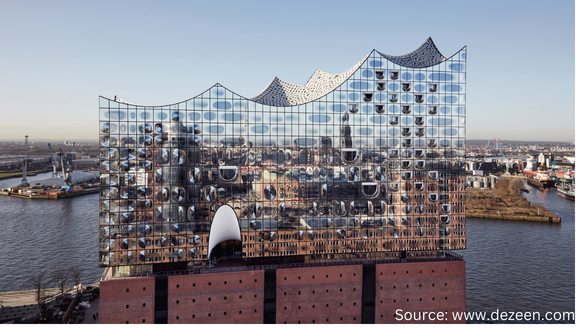In the realm of architectural design, the concept of democratic design stands as a testament to inclusivity and accessibility. It is a philosophy that seeks to create spaces that resonate with a diverse array of users. However, as we delve into the intricate tapestry of public buildings, a nuanced challenge emerges – the delicate balance between the designer’s vision and the users’ tastes.

At its core, democratic design is an embodiment of empathy. It calls upon designers to transcend their personal inclinations and immerse themselves in the nuanced world of user experiences. Yet, there exists a potential pitfall – a scenario where designers, driven by their artistic fervor, might inadvertently impose their preferences on a space rather than attuning themselves to the unique tastes and likings of the intended users.
Picture this: a public building, bustling with individuals of varied backgrounds, expectations, and needs. Here, the users and clients stand on opposite sides of the spectrum. The clients, often the financiers or commissioners of the project, wield influence over the design process. Meanwhile, the users, the individuals who will inhabit and interact with the space, bring with them an array of perspectives that might differ from the vision initially conceived by the designers.
Empathy becomes the linchpin in navigating this intricate dance between designer, client, and user. Designers, often driven by a passion for their craft, may be tempted to propose solutions based on what they feel is right aesthetically or functionally. However, the crux lies in understanding that the essence of democratic design lies not in the imposition of personal taste but in the orchestration of a harmonious blend that caters to the myriad tastes and preferences of the users.
In the democratic design paradigm, empathy is a compass that guides designers through the labyrinth of diverse user expectations. It involves a profound understanding of the users’ needs, cultural nuances, and the dynamic ways in which people engage with spaces. This user-centric approach ensures that the final design is not merely an artistic expression but a thoughtful response to the practical requirements and aspirations of the community it serves.
Public buildings, as unique canvases of societal interaction, pose a distinctive challenge. The users of these spaces span a broad spectrum – from the hurried commuter seeking shelter to the contemplative artist seeking inspiration. Balancing the interests of various stakeholders, including clients with specific project objectives, requires a delicate dance of diplomacy and design acumen.
Successful democratic design in public buildings is a collaborative symphony. It involves an ongoing dialogue between designers, clients, and users. Effective communication channels, robust feedback loops, and an unwavering commitment to understanding the pulse of the community are essential notes in this symphony. This collaborative process helps unearth valuable insights, ensuring that the final design is a manifestation of collective wisdom rather than a solitary artistic proclamation.
In conclusion, the marriage of democratic design and public buildings is a dance of empathy and collaboration. Designers must be attuned to the diverse tastes and needs of the users, acknowledging the subtle distinction between personal preference and communal resonance. The success of such projects lies not only in the bricks and mortar but in the intangible sense of belonging and functionality that the space imparts to its users. Through empathy and collaboration, we can weave public buildings that stand as true embodiments of democratic design – spaces that embrace diversity, cater to varied tastes, and foster a sense of unity within their walls.
